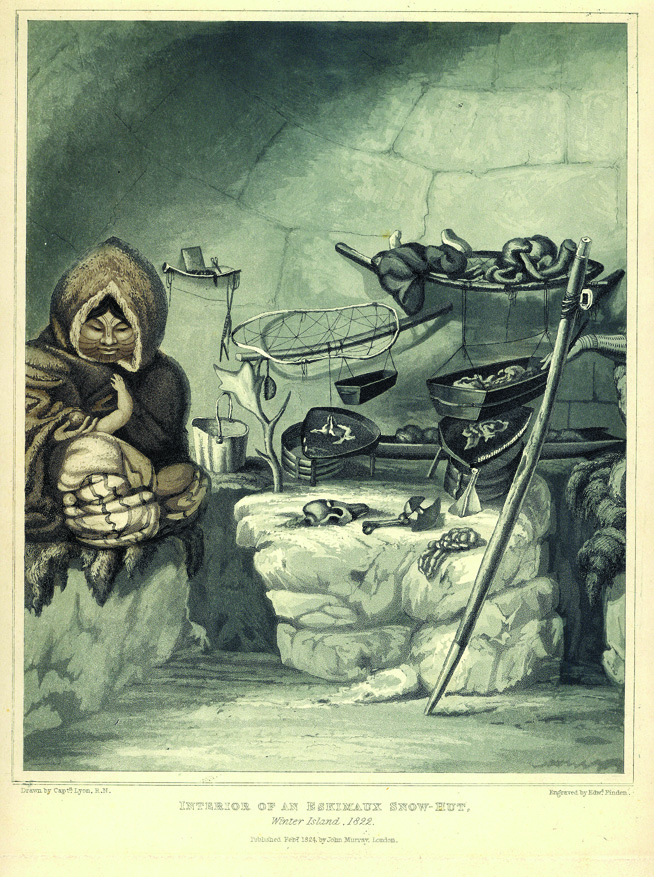Tattoos: Arctic

Guest blog by Kenneth R. Lister, Assistant Curator of Anthropology (Arctic, Subarctic, Great Lakes, Northwest Coast, Paul Kane collection).
When Captain George Francis Lyon crouched down and crawled through the entranceway into the dim interior of an Inuit igloo in February 1822, he was unaware that the facial and arm tattoos displayed on the women there were, in part, symbols of their status. The domestic scene before him showed food cooking in stone pots heated over oil lamps. Drying racks, a skin pail, an ulu (semi-circular knife), and a woman tending to an infant represented the women’s realm—their tattoos indicated that they had learned the necessary skills to be wives and mothers. To be tattooed was a rite of passage, a pain endured to mark a stage of life, accomplishments, and relationship with the spiritual realm.
In a widespread creation story, sea mammals were formed from the severed finger digits of the Mother of the Sea Beasts (known by various names, such as Sedna, Nuliajuk, and Taliilajuq). She was pleased by the women’s tattoos and it is thought that the tattooed lines across a woman’s finger joints honoured the Goddess and the animals she controlled. However, a young girl’s menses displeased the animal spirits, making puberty a dangerous time for the Inuit family. Tattoos appeased the animals though, and with this homage, tattoos symbolized purification.
Designs representing personal accomplishment, protection, power, identity, and spiritual connection define tattoo symbolism across the Arctic. Also, tattoos were a visible record of tradition. A tradition, though, that faded with the coming of the missionary, modern medicine, and contemporary practices. But Inuit elders across the Arctic still remember, and they are now the source of traditional knowledge for younger generations inspired to revive the tattoo tradition. For many in the contemporary Inuit world, markings on skin honour the ancestors and bolster identity.
How To See It: Tattoos runs until September 5, 2016.
